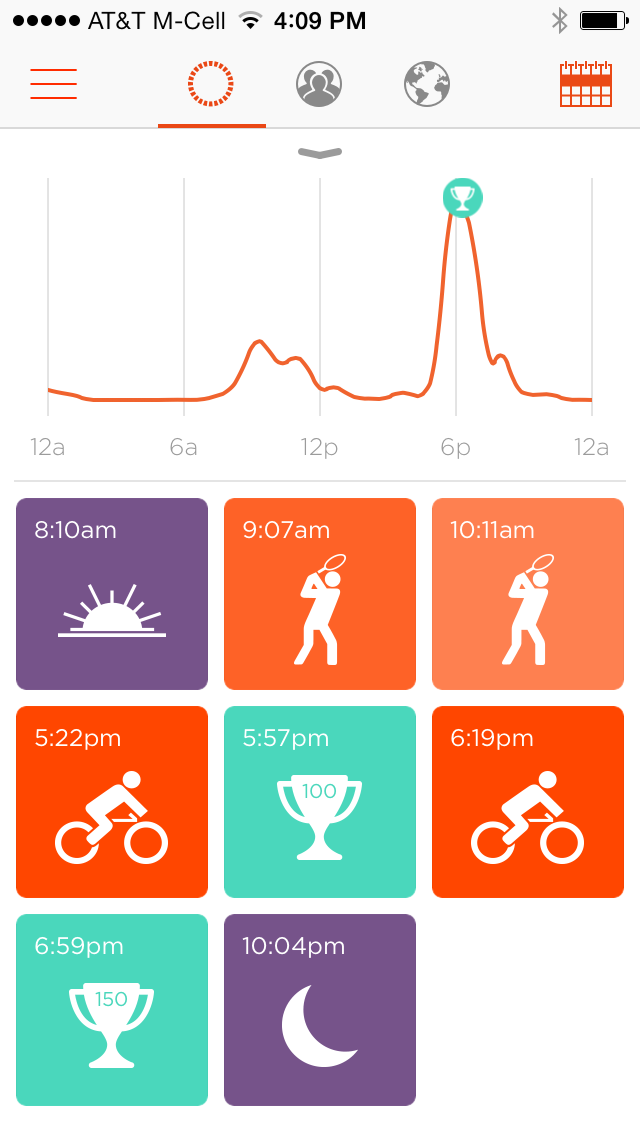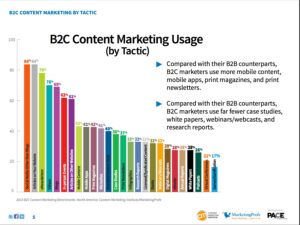![]() 2013 will be remembered for many things but for those of us tethered to a sedentary routine—sitting in front of a computer—2013 may be remembered as the year of the “fitness tracker.”
2013 will be remembered for many things but for those of us tethered to a sedentary routine—sitting in front of a computer—2013 may be remembered as the year of the “fitness tracker.”
In a nutshell—or a fob, wrist band or wearable disc—high-tech fitness trackers measure everything from overall movement and exercise to diet and even sleep patterns. Fashionable or sporty, these futuristic devices can be worn on your waist, dropped in your pocket, clipped to a lapel, or strapped to your wrist or ankle. They work with smart phone apps and websites to help you set goals, then motivate you to achieve them by quantifying them and displaying your every move in a clever daily report card, which you will be obsessed with, at least for the first month, it’s my guarantee. (Spoiler Alert: This post is not a review of Fitness Trackers.)
Essentially, what I’ve learned from owning a fitness tracker is that the gamification of fitness (and optimistically, weight loss) is a lucrative trend and one that I propose law firm marketers can apply to web analytics and be enormously successful…read on.
Big data—if only there was a simple way to consume what you need and can act on.
Most data is like a calorie-laden meal. On the plate it may look healthful and nutritious to the eye but when consumed, hidden, artery-clogging ingredients can make you feel bloated and drained of all energy while your body tries to figure out a way to use all those calories. You try to forget you ever indulged. Conversely, a light, but sustaining, low calorie option can make you feel like climbing mountains.
Lite-data allows even the most math deficient executives—counting myself among them—to analyze and solve many types of business or personal challenges with data.

To wit, the data reported by most fitness trackers is easy to access, analyze, interpret and act upon. (The sequence that sums up the entire reason why any data should be analyzed—to act upon.)
For example, if your fitness tracker “activity point” total at 6 p.m. falls below your set daily goal (which you set based upon the end result you want to achieve); get up and move.
Unfortunately, this does not include taking a short walk to the nearest Starbucks to consume a whole milk, caramel macchiato.
It’s really that simple.
Simplicity is a beautiful thing. And that’s the problem with website data—its ugly.
The typical law firm marketing department has now come to rely upon analytics for measuring the effectiveness of their web properties—easier said than done—but no matter how “user friendly” Google analytics has made their interface, the data is still just a pile of ugly data until you make it meaningful.
Visits Per Day, Page Views Per Visit and Visit Duration gives you context but there is nothing inherent in that data that allows you to put it together into something meaningful and actionable. And that’s where the humble Fitness Tracker sets an example.
Instead of placing a priority on reporting calories, duration, distance, or intensity—each a nice to know but disparate measure—they assign points to what really matters…activity. Achieving activity points over the course of a day and ultimately over time becomes a meaningful measure that motivates and delivers tangible results.
While fitness trackers use proprietary calculations to deliver various data, the fitness tracker I use works like this:
[The Misfit] Shine estimates your total calories burned each day, which includes: (1) calories related to your physical activities like walking, running, swimming, etc; and (2) the basal metabolic rate (BMR) of energy needed just to keep your body alive.
Yet, studies suggest that independent of calories or other factors, physical activity itself is among the most important contributors to an individual’s well being and that’s why Shine’s primary display is activity points, a reflection of physical activity, pure and simple. No activity, no points; lots of activity, lots of points. It’s that simple.
In the lite-data diet for law firm marketers pursing a lean analytics program, this is exactly what you want to do—create a point system for the most important data that brings you closer to your goal. Track the most important activity—that which makes a meaningful difference—assign it a simple point system and use it to motivate, for example, your blog authors and your marketing team. The rest of the data reported by analytics will be nice to know but not critical to making something happen.
What do you want to happen? That’s up to you…
For illustration, let’s say that Google analytics tells you that alienlawblog.com (fictional) had 30,000 visitors, 60,000 page views and an average visit duration of 36 seconds. You audit the blog’s content and learn that it takes a couple of test readers at least 1:30 (one and a half minutes) on average to skim-read the average post, which is 600 words.
From this audit, you conclude that visitors are not reading entire posts—they’re likely not even skimming to the end. (That stinks, but it is a reality of many an earnest law blogger.) Further, you have a bounce rate of 89%. Too many visitors are leaving their landing page without accessing any other content. REALITY CHECK: If readers are not consuming posts nor connecting to other content you are probably not influencing an action such as a return visit or a pick-up-the-phone lead.
But, you can justify this by saying that the purpose of the blog is to gain practice exposure and surely that can be achieved in 36 seconds. Okay, but really? IRL (in real life) has any attorney in your firm landed a client in 36 seconds?
And is 0:36 proportionate to the two-hours (likely more) that an attorney author spends on a blog post? If yes, no further attention needed. If no, then take that data and assign it a point system using the “lite-data” approach.
Lite-data analytics, and it works.
For every visit to a post—not the home page, not a category or tag archive—that lasts more than 1:30 give it 500 points. Each month, send the author the point totals they’ve earned and help them come up with ways to beat it. (Gamification works. That is the whole precept of the fitness tracker industry $$$$$.)
Over the course of months, the author can see how they are doing in a simple, easy to understand program and be motivated to best their points.
And, set the “team to work.” How can we prolong a visit? Blogs are a legitimate way to develop relationships and over time even online loyalty can turn into an engagement—yes, business development. What can we do to bring dimension to our content in order to keep visitors on the site longer? Can we add an info-graphic, a slide deck, or a download of a report or PDF? Can we add prompts to link back to archived material? Can we improve on the “hook” or add a case study, a story or survey? Taking those actions will result in data. And you can motivate authors/marketing staff by assigning a point system.
Measurement isn’t everything, but it helps.
I can’t tell you exactly how to define your point system, but the idea is two-fold. After you identify your business problem or question, assign a weighted point system to the piece of data that assumes the highest contribution and most impact—the one that is going to create the greatest benefit. Then work it. See if it doesn’t get you closer to your goal.
Part II
If any of this resonates or helps you, or you have further thoughts, I welcome your comments – spammers are doomed to the trash.
In Part II I will cover: Can you trust the data and staffing issues that data analysis will be wrestling with over the coming years.





